I arrived by train from Tokyo on a Monday morning, the journey carrying me further and further away from the bustling metropolis and into a quieter, slower world. When the train finally pulled into Imbe Eki, the train station next to Bizen, there was Taiga Mori , or as I quickly learned, Taiga-san, waiting for me at the small, unassuming station. The town itself seemed almost modest at first glance—narrow streets lined with simple houses, quiet except for the occasional rumble of a passing car, locals riding bicycles here and there. But beneath that quiet facade, I could sense the rumbling of tradition being shaken.
Bizen, a small city in the Okayama Prefecture, is the epicenter of a centuries-old ceramics tradition. Everywhere I looked, I could see hints of its pottery heritage—chimneys of kilns hidden behind homes, pots lining windowsills, the smell of wood fire in the air. And it was here, in this seemingly ordinary place, that I would spend five transformative weeks, working through two full woodfiring cycles in different kilns, one of them with Taiga-san.
Bizen pottery is one of Japan’s oldest forms of ceramics, steeped in rich history. Its origins trace back over a thousand years, with the earliest pieces produced during the Heian period (794-1185). Bizen ware is known for its unglazed, earthy colors and the intense wood-firing process that gives each piece a unique, character-filled charm. Historically, Bizen was sustained by six original potting families, including the Mori family, to which Taiga san belongs. These families played a crucial role in preserving and passing down the traditional techniques of Bizen pottery through generations.
Today, a new wave of artists is bringing fresh energy to Bizen, led by Taiga san, who is reshaping the craftsmanship and culture of Bizen pottery.
When I first arrived in Bizen, I was struck by how much tradition was still alive in every corner of the studio. The smell of wood smoke, the rough texture of unglazed clay, the slow, deliberate process—everything spoke of a centuries-old craft. And yet, working alongside him I saw firsthand how he was balancing that deep respect for tradition with an openness to innovation.
“Bizen, a small city in the Okayama Prefecture, is the epicenter of a centuries-old ceramics tradition”
Taiga Mori: Balancing Tradition and Innovation
At the core of Bizen’s transformation is the delicate dance between tradition and innovation, led by Taiga san, who remains committed to the laborious techniques that have defined Bizen pottery for over a thousand years: unglazed clay, long wood firings, and the subtle variations born of serendipity in the kiln. During my time there, I witnessed this process, participating in the intense, round-the-clock stoking of the kiln fires. It’s laborious, and sometimes even grueling, but there’s also an undeniable magic in watching the fire do its unpredictable work.
What made my time in Bizen truly special was the sense of community and the deep connections formed around the kiln. I shared countless meals with the entire Mori family, from hearty breakfasts before dawn to late-night dinners after long shifts watching the kiln. These meals were filled with laughter, stories, and a bond forged by the shared commitment to the craft. The slow pace of Bizen, the emphasis on community, and the shared labor of tending the kiln influenced not just my technique but my approach to creativity.
Yet, while honoring these traditions, Taiga san is also boldly experimenting with new forms, aesthetics, and more importantly, collaborations. He told me about his journey into international work along other artists, starting in 2013 when he traveled to France to construct a Bizen-style kiln. This experience planted the seeds of something broader—an idea that Bizen pottery could be a meeting ground for cultures. It was clear that Bizen wasn’t just looking inward; it was embracing the world. Taiga san has embraced collaborations with contemporary ceramic artists and digital designers to create pieces that challenge classic perceptions of Bizen.
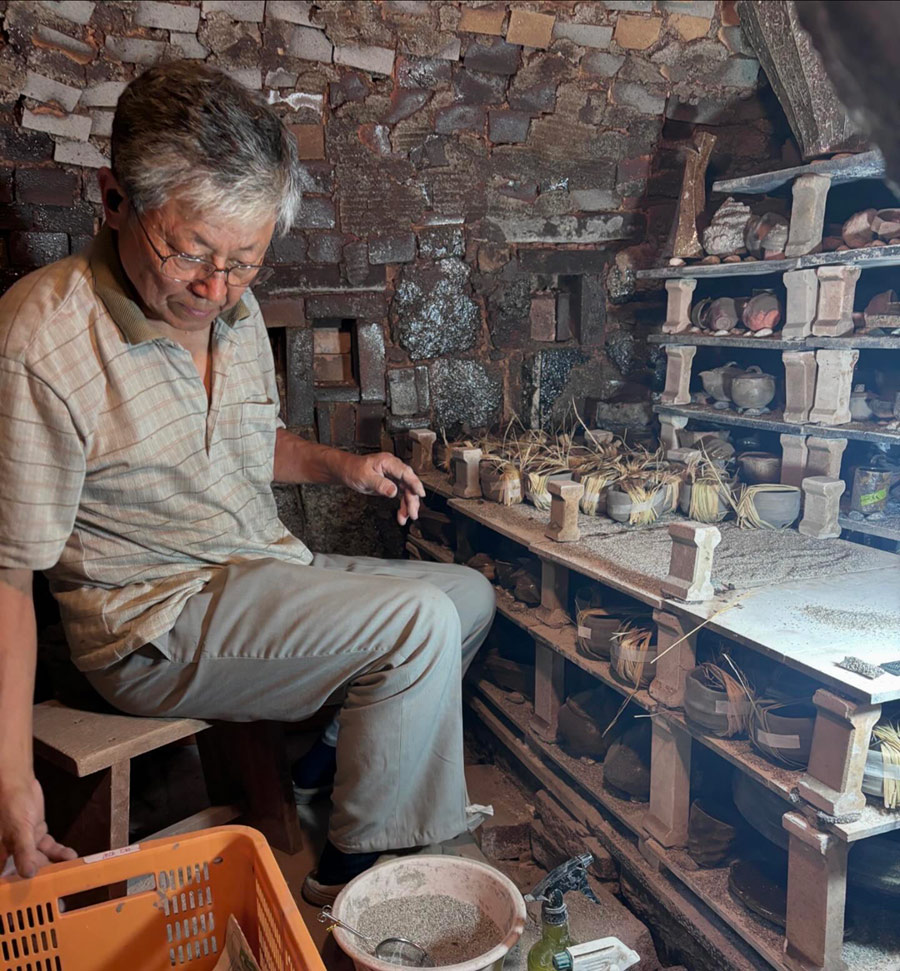
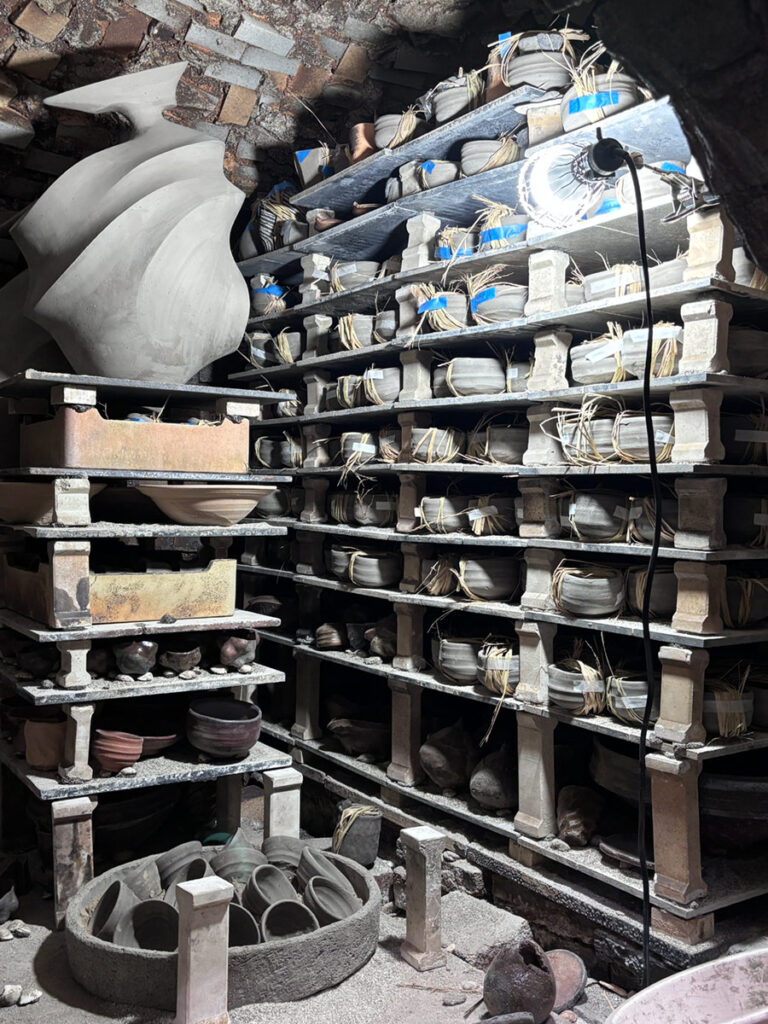
Leadership and Community Vision
Taiga san isn’t just an artist; he’s also a leader within the community and a visionary pushing for Bizen to open up to the world. His studio is bustling—a meeting place for artists, both local and visiting. Being there, I felt the spirit of openness that he champions. Artists would drop by to share ideas or lend a hand, and every conversation felt like a cross-pollination of inspiration. His leadership style is collaborative, and it shows. His vision is a departure from the more insular practices of the past, infusing the community with a renewed sense of energy. He always welcomes people from all walks of life to observe, learn, and ask questions about the process. He freely shares his wisdom, as he believes deeply in the importance of the exchange of knowledge as part of his philosophy of life.
I had the privilege of witnessing how Taiga san and the artists around him were breaking down barriers, not just within the pottery world but across disciplines. Designers, chefs, filmmakers—all were welcome in the studio, and it was in these collaborations that new, unexpected beauty emerged.
His approach also bridges generational gaps. I watched him work with older potters whose techniques were honed through decades of practice, the most significant being Atsuo san, his own father, who even though less active these days is a permanent fixture in Taiga san’s studio, and then turn around and mentor younger artists eager to experiment. Kazuya Ishida, Taiga-san’s colleague, uses his influence to highlight Bizen’s relevance in today’s world, having worked abroad in the UK and leading projects like the ‘Oxford Anagama Project.’
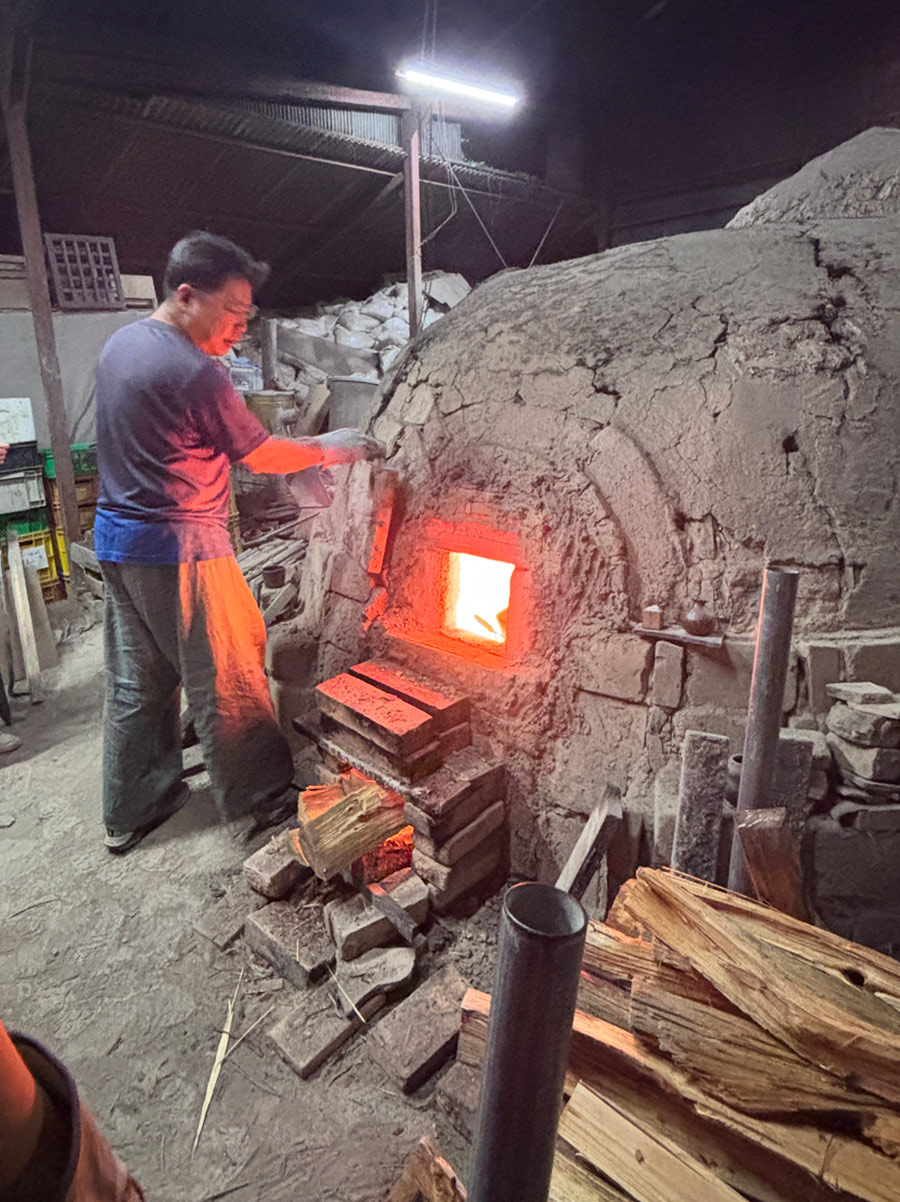
A Community at the Intersection of History and Modernity
The changes happening in Bizen have ramifications that extend beyond this small community. As Taiga Mori-san and others broaden the scope of what Bizen can be, the broader landscape of Japanese ceramics shifts. Working with these potters, I saw firsthand how they are reaching beyond the borders of their craft. The interplay of modern creativity with ancient techniques serves as a model for traditional crafts across Japan.
Figures like Taiga Mori, Kazuya Ishida, Takashi Baba, and Syo Fujita navigate the intersection of history and modernity. Kazuya san combines traditional Bizen techniques with contemporary influences, often experimenting with form and texture. Baba san pushes boundaries with his ‘Yohen Blue’ series, integrating new glazing techniques for a fresh, modern finish. Fujita san’s ‘White Bizen’ series introduces a minimalist aesthetic, embracing the raw beauty of the clay. Fujita san’s «White Bizen» series introduces a minimalist aesthetic, embracing the raw beauty of the clay itself. They honor their heritage but are not bound by it. Instead, they see tradition as a foundation for something dynamic and new. This balance between respecting the past and embracing the future is what makes Bizen pottery today so compelling.
For readers of woodfiring.net, this story offers a window into how cultural heritage can evolve, and how a community of dedicated artists can redefine an art form while staying true to its roots. Bizen pottery is not just surviving; it is thriving, promising an exciting future for both the craft and the artists who shape it.
In the end, Bizen pottery is a testament to the power of both tradition and change. It shows that an ancient craft can find new life in a modern world without losing the essence that made it special. Through the leadership of artists like Taiga Mori, Bizen is poised to inspire future generations to see the value in craft, community, and the beauty that emerges when history and innovation come together.
To continue Taiga-san’s vision of opening Bizen to the world, we are organizing some wood fire workshops for 2025 and 2026 in Bizen and Europe, allowing people to experience the unique magic of this tradition firsthand. The first workshop will be held in Bizen on April 21st to May 2nd. Please get it touch at @mkpotterystudio on Instagram or email mkpotterystudio@gmail.com for further details. Quote “woodfiring.net” to get an special 15% discount when you sign up..
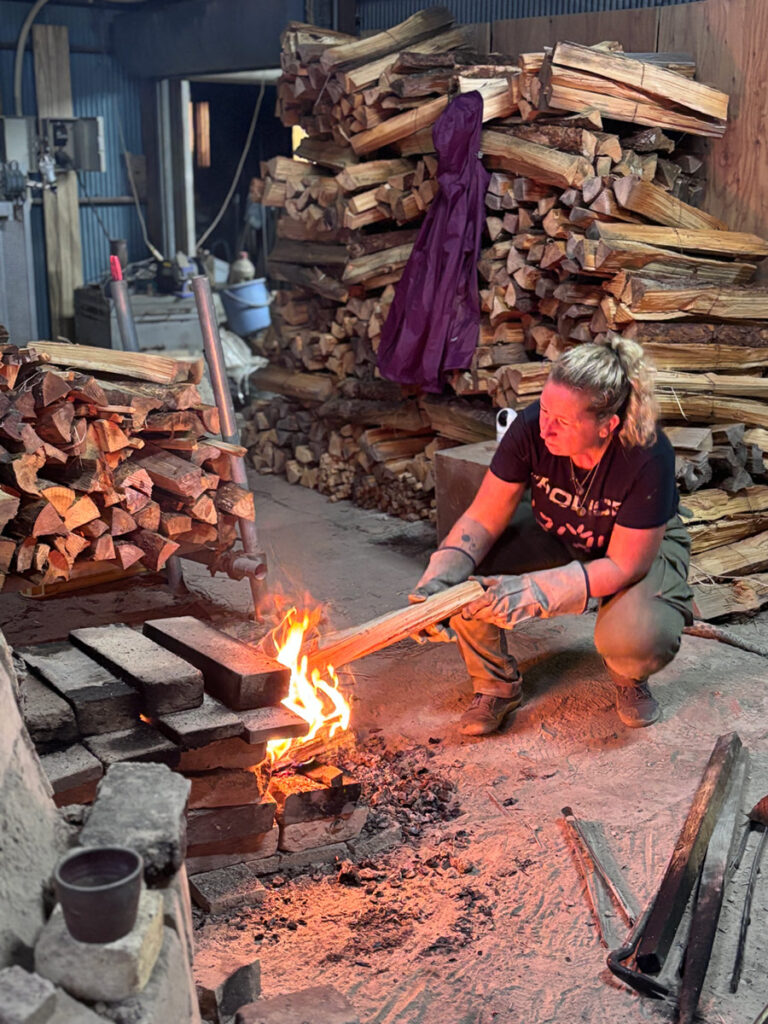
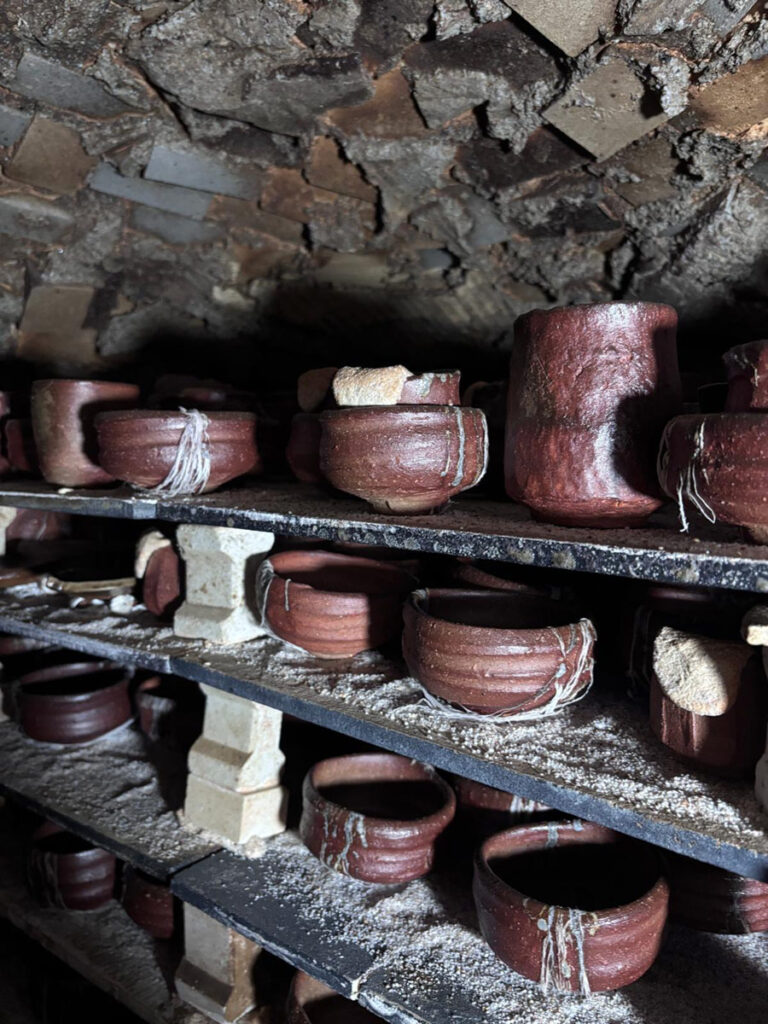
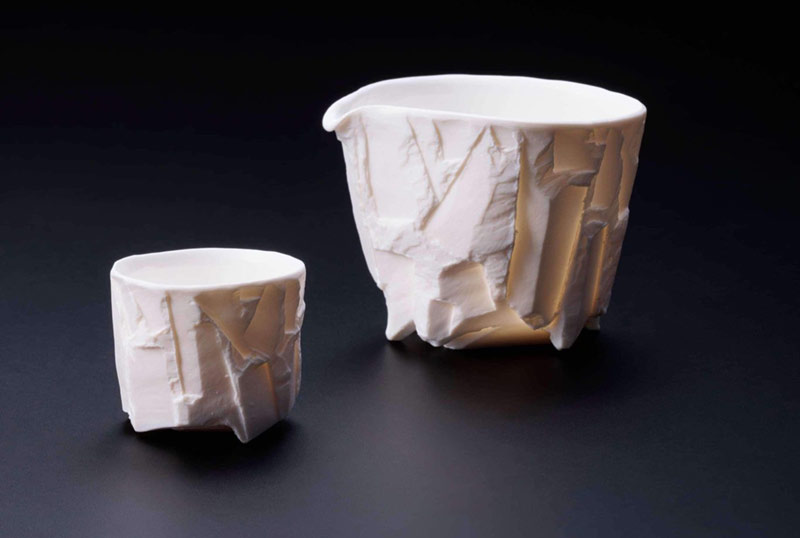
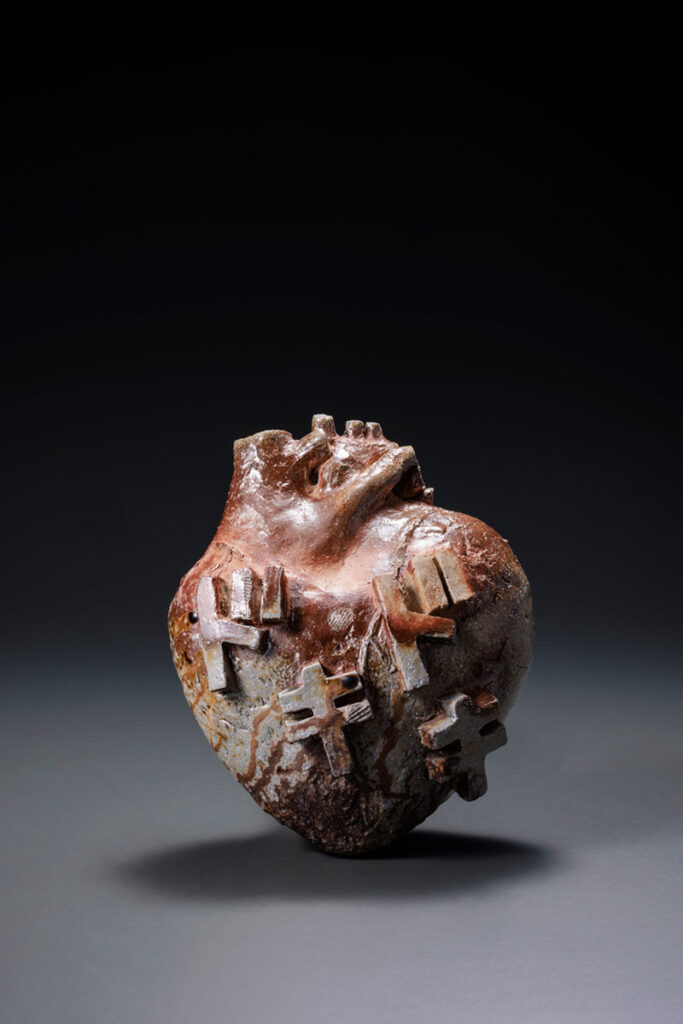
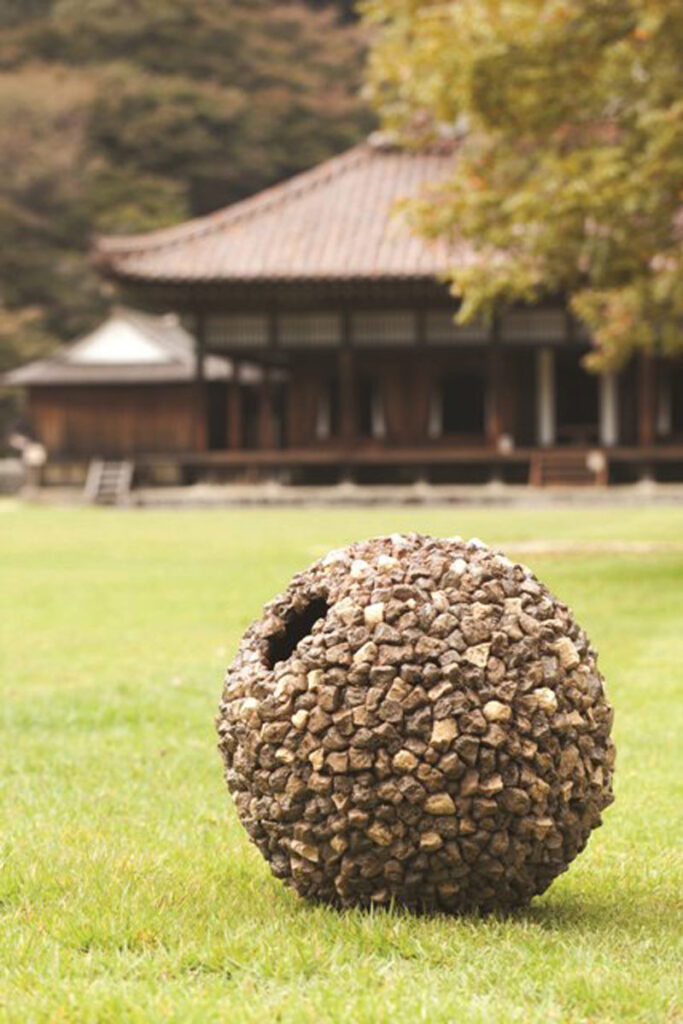
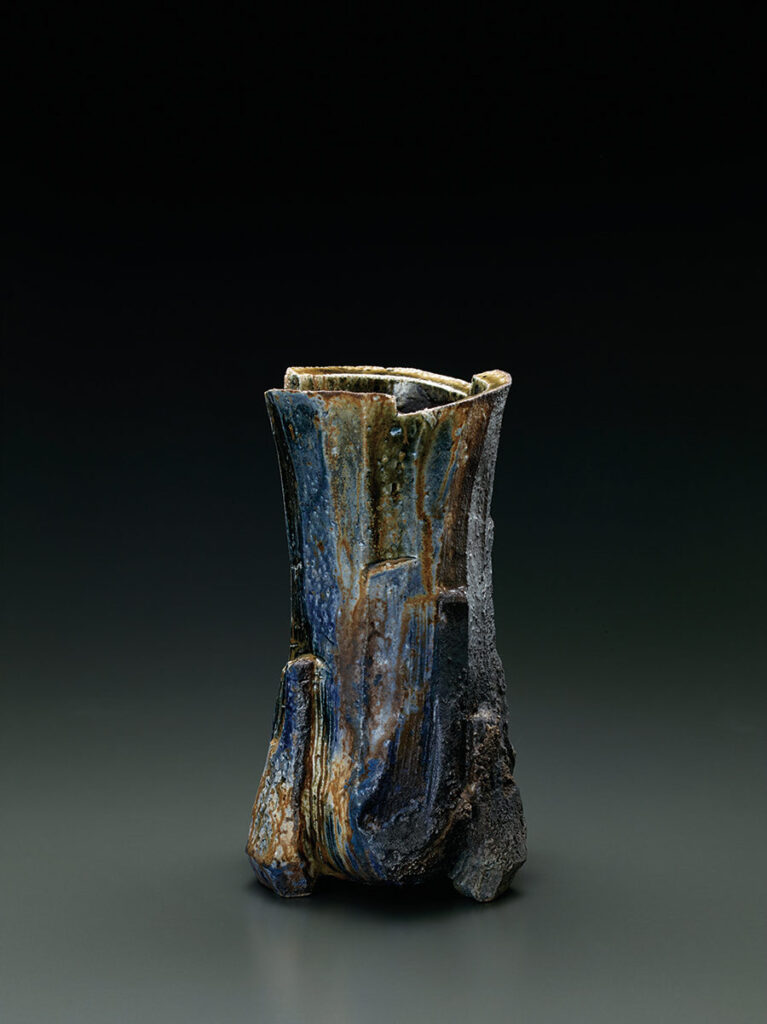

Magali Kivatinetz is a London-based ceramic artist whose work draws inspiration from Japanese philosophies like Mingei and kintsugi. She collaborates with restaurants and individuals to create functional and aesthetically balanced pieces, embracing the beauty of natural materials and the transformative power of wood firing. @mkpotterystudio Taiga Mori is a third-generation ceramic artist from Bizen, Japan, blending centuries-old pottery traditions with modern innovations. As a community leader, Taiga-san promotes collaboration and openness, redefining the future of Bizen ceramics through international exchanges and creative partnerships. @taiga_mori